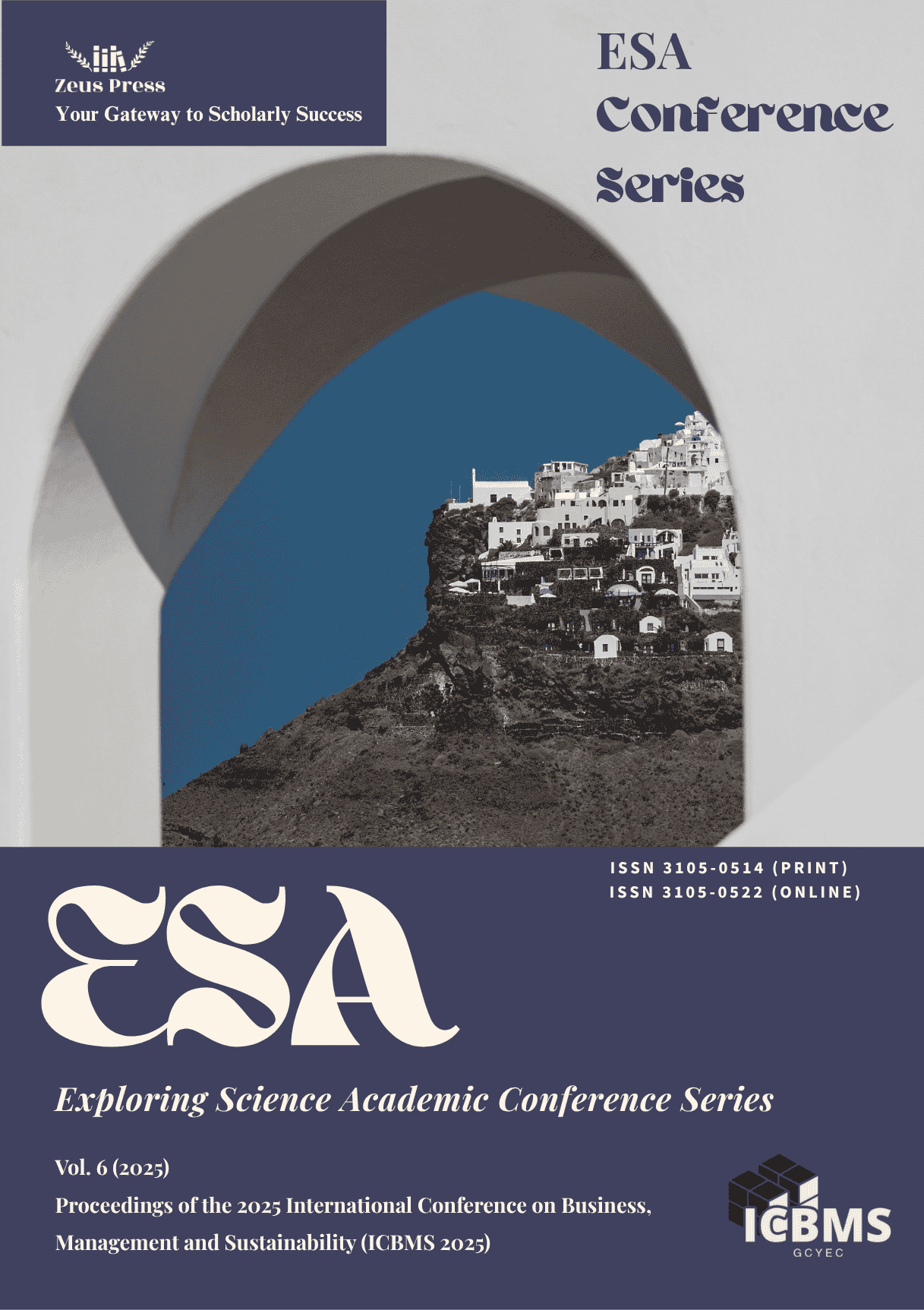Information Management as a Strategic Lever—A Case Study of Satya Nadella’s Leadership in Microsoft Transforming
Main Article Content
Keywords
Information Management; Satya Nadella; Transforming Microsoft; Strategic
Abstract
Since 2014, Microsoft CEO Satya Nadella has driven a remarkable transformation via cloud and AI focus, with information management as a core enabler. This study explores how Nadella’s information management—collection, integration, and application of internal/external data—influenced Microsoft across five management domains: managerial roles (Mintzberg), strategy (BCG matrix, Porter’s five forces), HR (diversity), motivation (Maslow), and leadership (path–goal theory). Using a case study approach, it analyses practices such as the “cloud-first” strategy, “One Microsoft” information sharing, employee feedback mechanisms, and data-driven partnerships (e.g., OpenAI), which are supported by performance and satisfaction data. Effective information management led to 200% market cap growth (2014–2019), Azure’s 23% cloud share (2023), 47% revenue growth (2017–2020), and 85% employee satisfaction (2023). Nadella’s integration of information management and transformational leadership offers a blueprint for organizational success in the digital era.
References
- Agnihotri, A., & Bhattacharya, S. (2021). Satya Nadella: Leading Microsoft’s Growth. SAGE Publications: SAGE Business Cases Originals. https://sk.sagepub.com/cases/embed/satya-nadella-leading-microsofts-growth
- Ahmed, Z., Amizadeh, S., Bilenko, M., Carr, R., Chin, W. S., Dekel, Y., ... & Zhu, Y. (2019, July). Machine learning at Microsoft with ML. NET. In Proceedings of the 25th ACM SIGKDD international conference on knowledge discovery & data mining (pp. 2448-2458). https://dl.acm.org/doi/abs/10.1145/3292500.3330667
- Annan, B. (2022). Leadership Styles of Africans: A Study Using Path-Goal Leadership Theory. SAM Advanced Management Journal, 87(1), 4-2. https://www.proquest.com/openview/f59f1ae9c31d420a8463da420cc1dadd/1?cbl=40946&pq-origsite=gscholar
- Boutamine, M., & Benlaharche, S. (2024). The CEO's influence on organizational outcomes at Microsoft: a perspective on transformational leadership in the tech sector. South Asian Journal of Management, 31(2), 7-27 https://www.proquest.com/openview/6e2ce04b7f3f77cbff601855a8533caf/1?pq-origsite=gscholar&cbl=46967
- Chebolu, R. M., & Nair, J. (2021). Microsoft: Building a Collaborative Work Culture to Foster Innovation. IUP Journal of Organizational Behavior, 20(4).https://openurl.ebsco.com/EPDB%3Agcd%3A1%3A4727793/detailv2?sid=ebsco%3Aplink%3Ascholar&id=ebsco%3Agcd%3A154836614&crl=c&link_origin=scholar.google.com
- Goodlad, L. M., & Stone, M. (2024). Beyond Chatbot-K: On Large Language Models,“Generative AI,” and Rise of Chatbots—An Introduction. Critical AI, 2(1). https://read.dukeupress.edu/critical-ai/article/doi/10.1215/2834703X-11205147/390862/Beyond-Chatbot-K-On-Large-Language-Models
- Grynbaum, M. M., & Mac, R. (2023). The Times sues OpenAI and Microsoft over AI use of copyrighted work. The New York Times, 27.https://www.rose-hulman.edu/class/cs/csse313/schedule/day9/NewYorkTimesSuesOpenAI.pdf
- Hagendorff, T. (2020). The ethics of AI ethics: An evaluation of guidelines. Minds and machines, 30(1), 99-120.https://link.springer.com/article/10.1007/S11023-020-09517-8
- John, B., Alsamarra’i, Z., & Panteli, N. (2022). Enhancing employee experience in the era of hybrid work: the case of Microsoft viva. IEEE Software, 40(2), 70-79. https://ieeexplore.ieee.org/abstract/document/9993972
- Kiettikunwong, N., & Narot, P. (2024). Overview of Human Resource Research. In Determining Outcomes and Impacts of Human Resource Development Programs (pp. 9-22). Singapore: Springer Nature Singapore. https://link.springer.com/chapter/10.1007/978-981-97-0395-1_2
- Nadella, S. (2018). Hit refresh. Bentang Pustaka. https://books.google.com.hk/books?hl=zh-CN&lr=&id=y8JwDwAAQBAJ&oi=fnd&pg=PA1&dq=Satya+Nadella&ots=T6sDP12q7q&sig=NQJdPy6aaUv7geIaLaSfDBjNrCQ&redir_esc=y#v=onepage&q=Satya%20Nadella&f=false
- Nolte, A., Pe-Than, E. P. P., Filippova, A., Bird, C., Scallen, S., & Herbsleb, J. D. (2018). You Hacked and Now What? -Exploring Outcomes of a Corporate Hackathon. Proceedings of the ACM on Human-Computer Interaction, 2(CSCW), 1-23. https://dl.acm.org/doi/abs/10.1145/3274398
- Owe, A., & Baum, S. D. (2021). Moral consideration of nonhumans in the ethics of artificial intelligence. AI and Ethics, 1(4), 517-528. https://link.springer.com/article/10.1007/s43681-021-00065-0
- Prakash, D., Bisla, M., & Rastogi, S. G. (2021). Understanding authentic leadership style: The Satya Nadella microsoft approach. Open Journal of Leadership, 10(2), 95-109.https://www.scirp.org/journal/paperinformation?paperid=109711
- Rennison, J., & Murray, E. (2023). How Big Tech Camouflaged Wall Street's Crisis. International New York Times, NA-NA. https://go.gale.com/ps/i.do?id=GALE%7CA743746085&sid=googleScholar&v=2.1&it=r&linkaccess=abs&issn=22699740&p=AONE&sw=w&userGroupName=anon%7Ebd38d962&aty=open-web-entry
- Weidener, L., Greilich, K., & Melnykowycz, M. (2024). Adapting Mintzberg’s organizational theory to DeSci: the decentralized science pyramid framework. Frontiers in Blockchain, 7, 1513885. https://doi.org/10.3389/fbloc.2024.1513885
- Ye, Z. (2024). Analyzing the Successful Reasons for Microsoft Cloud Computing Service Business Transformation. Advances in Economics, Management and Political Sciences, 102, 117-124.https://www.ewadirect.com/proceedings/aemps/article/view/14150


